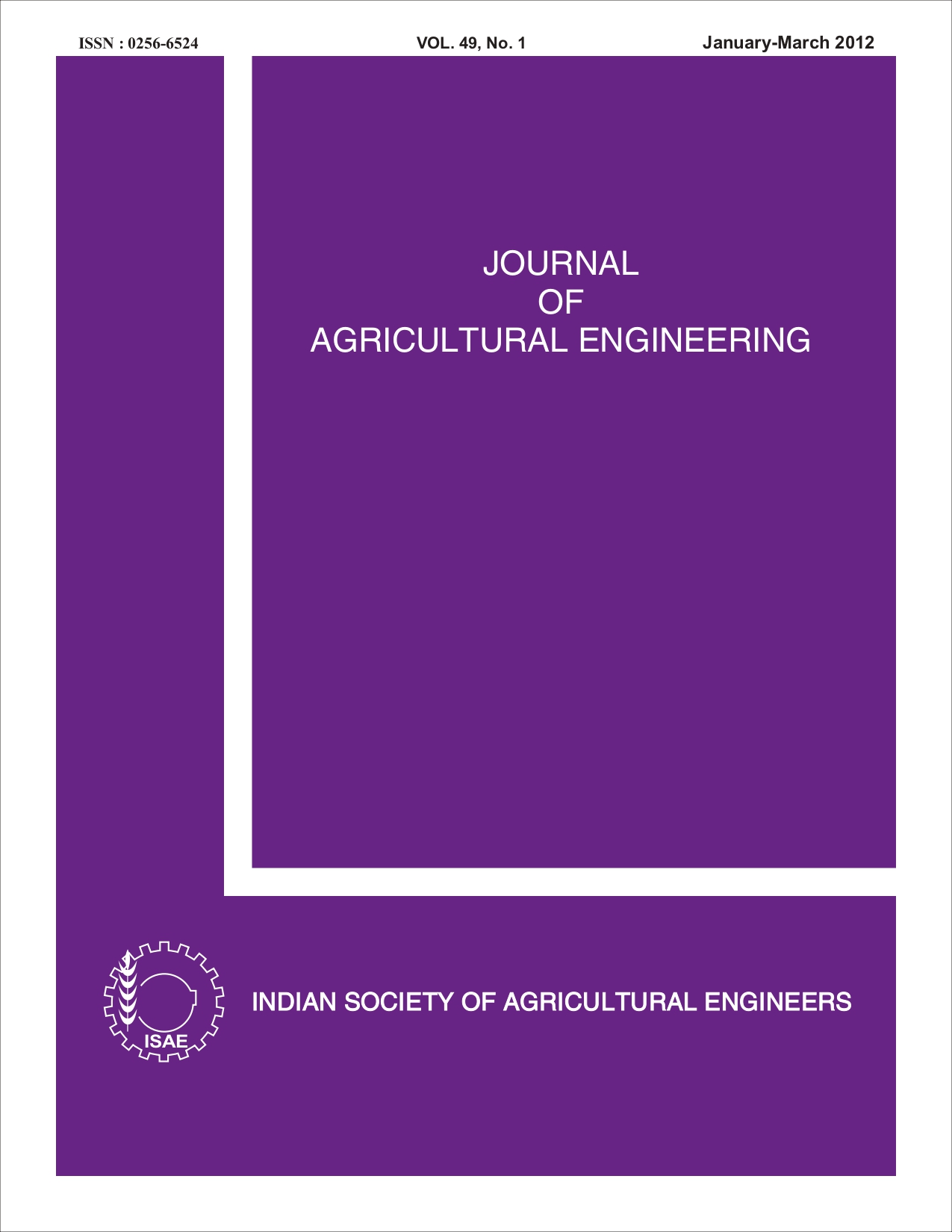Modelling of Thermal Environment in Covered and Plinth Storage of Wheat as Effect of Colour of Plastic Sheet
DOI:
https://doi.org/10.52151/jae2012491.1466Keywords:
Cover and plinth storage, thermal modelling, thermal analysis, colour plastic sheetAbstract
Traditional temporary storage methods used for crops are Cover-and-plinth (CAP), flexible silos, pit storage and bunker storage. The CAP is commonly adopted in India for storage of bumper crops. In India, about 16.8 Mt of wheat grains are stored in CAP storage due to insufficient indoor storage facilities. Black coloured plastic covers (250 micron) are used for CAP storage structures, which are exposed to open sun, get heated up due to characteristics of black colour resulting in build up of higher temperature of air surrounding the grain and higher grain temperatures. A solar energy based thermal model was developed for predicting wheat grain temperature while stored in CAP. The model was solved for the climatic conditions representing northern India (Haryana, Punjab and Uttar Pradesh). Around 10 to 12°C rise in yearly grain temperature from mean monthly ambient temperature could be observed with black cover. The model was validated with the two months of experimental data of CAP storage with black cover, which showed fair agreement with the experimental values. A white colour plastic cover was proposed with simulated results indicating to reduce the grain temperature by 6 to 8 oC.References
Bounas L. 1989. Heat and moisture transfer in grainsconsequences for aeration and storage. In: Multon J L (Ed.), Preservation and storage of seeds and their byproduct- Cereals, oilseeds, pulses and animal feed, CBS Publishers and Distributors, New Delhi, 160-169.
Dubey O P; Pryor T L. 1996. A user oriented simulation model for deep-bed solar drying of rough rice. World Renewable Energy Congress, 695-699.
Duffie J A; Beckman W A. 1991. Solar Engineering of Thermal Process. John Wiley and Sons Inc. New York.
Jain D. 2005. Modeling the system performance of multitray crop drying using an inclined multi-pass solar air heater with in-build thermal storage. J. Food Engng., 71(1), 44-54.
Jia C C; Sun D W; Cao C W. 2000a. Computer simulation of temperature changes in wheat storage bin. J. Stored Products Res., 37,165-177.
Jia C C; Sun D W; Cao C W. 2000b. Finite elementprediction of transient temperature distribution in a grain storage bin. J. Agric. Engng. Res., 76, 323-330.
Jia C C; Sun D W; Cao C W. 2001. Mathematical simulation of temperature fields in a stored grain bin due to internal heat generation. J. Food Engng., 43, 227-233.
Lui B Y H; Jordan R C. 1962. Daily insolation on surfaces tilted towards equator. American Soc. of Heating, Refrigerating and Airconditioning Engineers J., 3(10), 53-59.
Tiwari G N. 2002. Solar energy fundamentals, Design, Modelling and Applications. Narosa Publishing House, New Delhi.
Watmuff J H; Charters W W S; Proctor D. 1977. Solar and wind induced external coefficient for solar collectors. Comples, 2, pp: 56.
Whillier A. 1967. Design factors influencing solar collectors, low temperature engineering application of solar energy. American Soc. of Heating, Refrigerating and Airconditioning Engineers, Inc., New York, 27-40.














